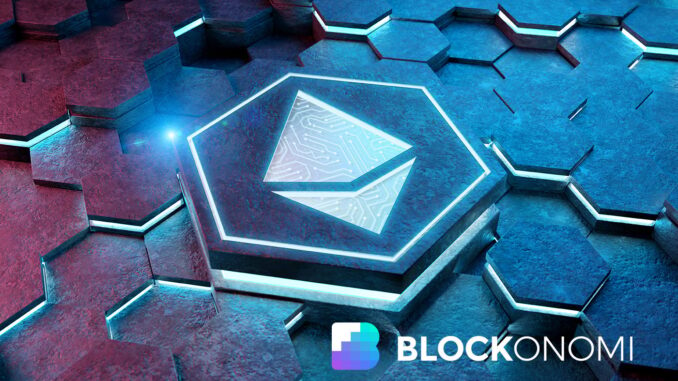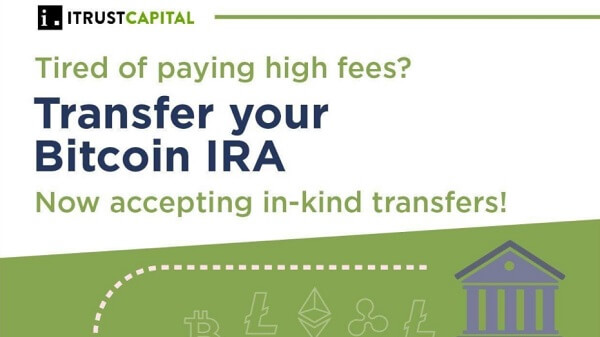
The Shanghai upgrade is on the horizon. The hype is simply too great not to watch. Ultimately, the Shanghai hard fork is a crucial milestone toward a more efficient, secure, and sustainable Ethereum network.
Unlocking Staked ETH
The upcoming Shanghai upgrade scheduled for April 12, 2023, has generated headlines with unlocking staked ETH. Shanghai upgrade will allow validators to withdraw their ETH deposited in staking.
Following last year’s Merge event, this will mark a significant milestone in the Ethereum ecosystem.
Ethereum (ETH) has shown strong momentum recently, outpacing Bitcoin (BTC) by a wide margin. According to on-chain data, ETH rose 4% to $1,861 at the press time, while BTC slipped 1.8%.
The recent uptrend in the ETH/BTC ratio is also a promising sign, although it remains within a multi-year consolidation range between 0.052 BTC and 0.085 BTC since the Spring of 2021.
It is worth noting that breaking out of this range could lead to significant movements and reactions from market participants.
ETH Profits Look Good
Data analytics platform Glassnode tweeted on Wednesday that the number of ETH investors holding at a loss has reached 10-month lows. This could indicate a positive signal for the overall health of the ETH market.
It will be interesting to see how the ETH/BTC ratio evolves over the coming weeks and whether ETH can maintain its impressive performance relative to BTC.
The move from Proof-of-Work (PoW) to Proof-of-Stake (PoS) consensus mechanism opens plenty of opportunities. The Merge itself is simply the opening chapter.
The Shanghai upgrade, the next milestone post-merge, aims to bring several benefits to the Ethereum network, including improved scalability, security, and reduced energy consumption.
Additionally, the upgrade will introduce Ethereum Improvement Proposals, such as EIP-1559, which will help reduce transaction fees by introducing a more efficient fee market mechanism.
This could be a significant benefit to users and developers who have been struggling with high gas fees for transactions on the Ethereum network.
Another significant change the community can expect is the introduction of the EIP-3554. This proposal will delay the Ethereum network’s difficulty bomb, giving developers more time to finalize the transition to ETH 2.0.
Price Talk Post-Shanghai
There is a growing interest in the price of Ethereum after Shanghai. The upcoming release of staked ETH has led to speculation about possible dumps, as ETH holders can now withdraw their staked ETH at any time rather than being locked in for 2 years.
While some may fear a sell-off and price drop, it’s essential to note that not all staked ETH can be withdrawn immediately, and many stakers may prefer to continue holding and staking their tokens.
It’s worth noting that not all staked ETH is readily available for withdrawal. According to estimates, only 50,400 ETH or $95.7 million worth can be withdrawn daily. Validators on the Ethereum network must be aware of the different withdrawal processes and deadlines.
The Ethereum network currently has 18.1 million staked ETH, valued at $34.3 billion, with LidoDAO accounting for 31.2%. Lido Finance expects stETH withdrawals to be unavailable on the mainnet until mid-May.
This is due to ongoing code audits and a two-week safety margin being maintained.
The delays in withdrawals are primarily due to limitations put in place by developers to prevent a massive leak of ETH. Only 16 partial withdrawal requests, consisting only of staking rewards, can be processed approximately every 12 seconds.
In addition, full withdrawals, where validators withdraw entirely from the Ethereum blockchain, may also take a relatively long time.
Coinbase has announced that it will start accepting withdrawal requests 24 hours after the end of Shanghai. However, due to the expected high demand, the withdrawal process could take weeks or months.
Regardless of the price, ETH is getting stronger, and should be one of the most important blockchains going forward.




 Bitcoin
Bitcoin  Ethereum
Ethereum  Tether
Tether  XRP
XRP  Solana
Solana  USDC
USDC  Dogecoin
Dogecoin  TRON
TRON  Cardano
Cardano
Be the first to comment